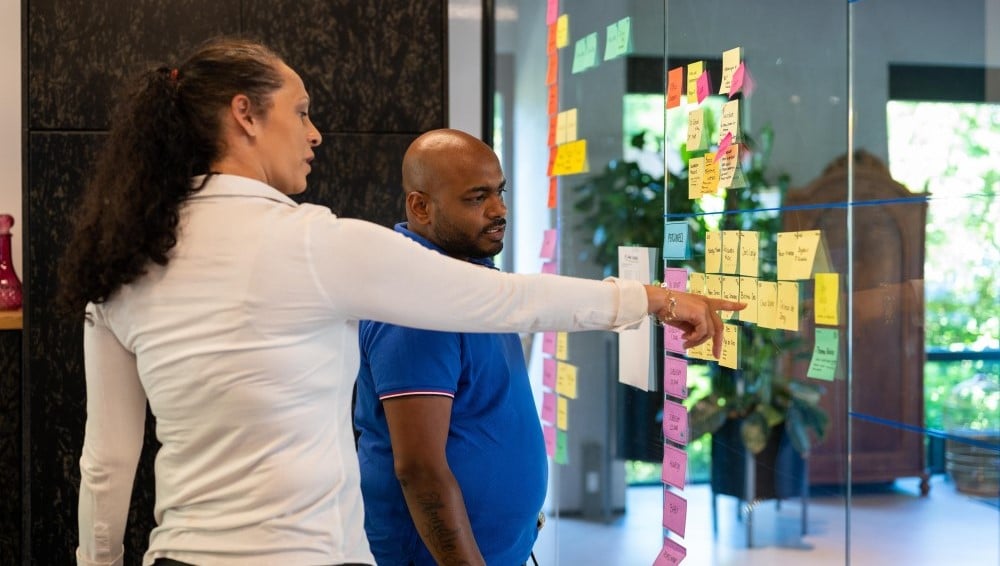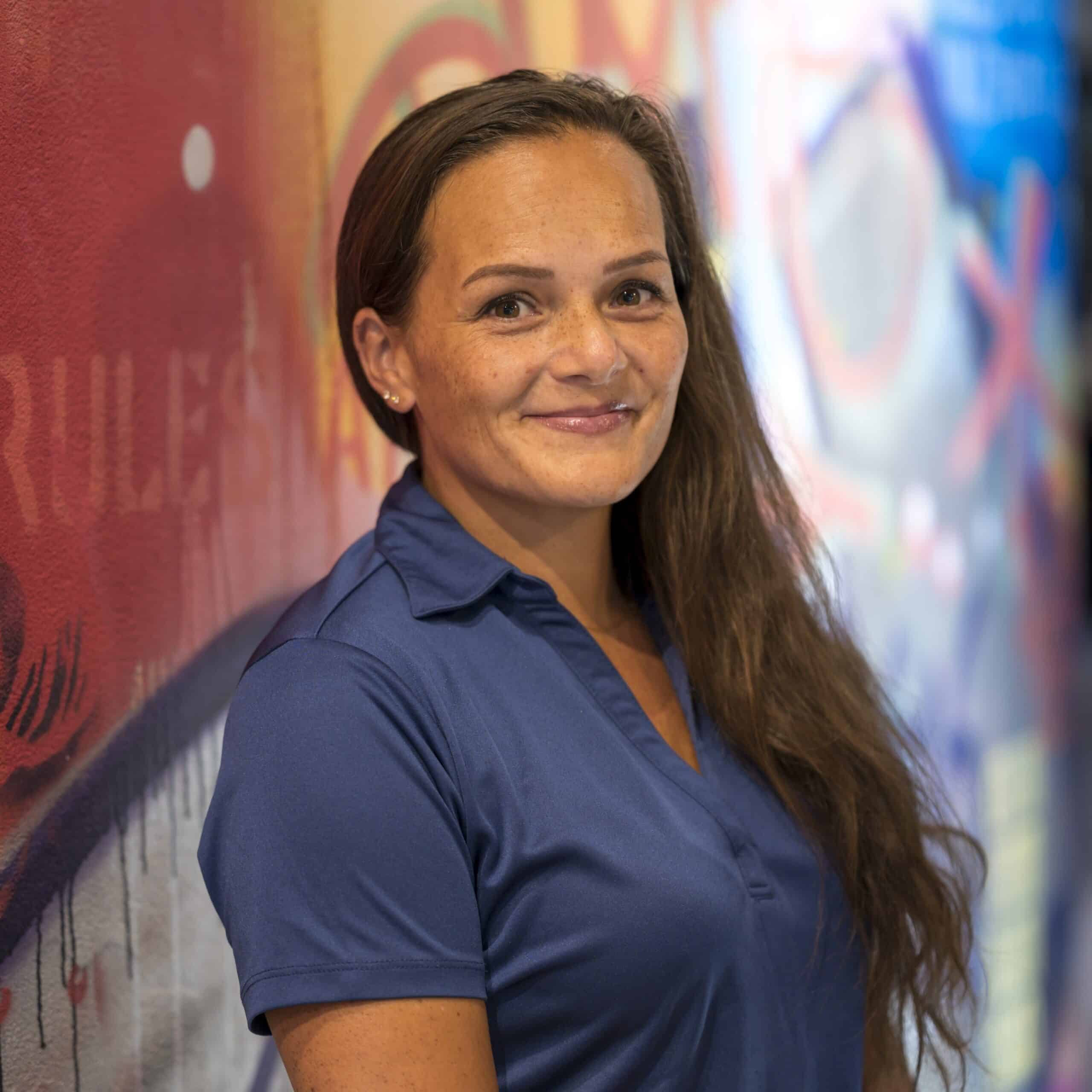Seven facilitation tips to start your Scrum Team
Setting up your new Scrum Team is necessary if you want them to succeed. 97% of employees, executives, and educators believe that a lack of alignment within a team directly impacts the outcome of a project or a task, Salesforce found a while ago. And 86% believe workplace failures are related to a lack of collaboration or ineffective communication. You can’t get more reasons for doing it right, can you?
1 May 2023
When you start with a new Scrum Team, you must pay close attention to setting up your Scrum Team smartly. I always like to start the team with a ‘lift-off’, called a ‘kick-start’ or ‘start-up’.
Reserve one day to set up the Scrum Team, make sure all Scrum Team members are invited and able to join, and – as closure – go for drinks, dinner, or do another fun team activity. Here are my seven tips to create a perfect lift-off.
1. Get to know each other
2. Lay a foundation together
3. Color in the Scrum Framework
4. Set up a Definition of Done
5. Create a Product Backlog
6. Identify stakeholders
7. Have fun

1. Get to know each other.
When you’d like to build a safe working environment, the foundation is trust. One of the key factors of trust is intimacy, or the willingness to share. To share information about yourself, who you are, and where you’re from. As a side note, the other factors for building trust are credibility and reliability as explained in the Trusted Advisor.
Some ideas to get to know each other well are:
- Two truths, one lie. Introduce yourself and share two facts about yourself and one thing that is not true. Have the other participants guess what the lie is here.
- Ask each other conversation-starter questions. What music do you like? What do you do when you have a day off? If you could choose a superpower, what would it be? What is your favorite movie? What is your favorite show that you’ve binge-watched? If you could swap your life with someone else, who would that be? If you could only eat one type of food for the rest of your life, what would that be? What’s your favorite quote? What does your favorite holiday look like? What dreams or goals do you have? What did you want to become when you were little? What is your favorite app on your phone?
- Create a visual, image-rich mind map of who you are and what brought you here. Give your team members time to create a visual mind map of themselves and have people who want to share it with the other team members (in pairs or in quads).
Find a group of people who challenge and inspire you, spend a lot of time with them, and it will change your life.
—Amy Poehler—
2. Lay a foundation together
To create a physically and psychologically safe environment, you’d like to have everyone on the same page. That’s why you will have to deal with individual wishes and preferences, and – with a little effort – you can agree on some basic things. Set up working agreements with your team to lay a solid foundation for future collaboration.
Psychological safety
To create working agreements, you could simply ask: ”How do we work together?” Adding some plays or structures will make it more fun and engaging. In addition, if the Scrum Team members can contribute to the working agreements, they will take more ownership of it than when you, the Scrum Master, simply hand over the working agreements.
What you could ask and do to create the working agreements:
- What are the Scrum Values? What do they mean to you and us? Do we have other values that we think are important? And how do we make them concrete?
- Liberating Structure Triz could also help and add a little fun to the exercise. You can start by asking the question, “What’s the worst thing we can do to totally mess up this team?” Ask the team members to go wild and write everything they can come up with and pretend like no one is reading the sticky notes or the comments. First individually, then in pairs. Then ask, “What have you seen yourself, your team, or your organization do if you are brutally honest?” Mark those items. Next, think of solutions that could help you to prevent that from happening.
- Play WINFY, a Liberating Structure, What I Need From You. Express what you need from other Developers, the Scrum Master, the Product Owner, or the organization to succeed.
- Address guiding principles like ‘stop starting, start finishing’, using the ‘boy scout rule’ and ‘How do I capture or share knowledge?’

Physical safety
- What agreements does your team need for working from home? What are the organizational boundaries in which you can move?
- Where is our team workspace, and how do we make it comfortable for everyone? Think about playing the radio the whole day, having a ‘no disturb’ sign, having physical visualizations, and windows open or closed. Make sure that everyone is heard.
- What tools do we use for communication: E-mail, Slack, WhatsApp, or the phone?
And what about inclusivity and diversity? Do we have to consider team members with special needs? For example, nothing is more disturbing than being asked to look up items in the Product Backlog marked orange or green if you are color blind.
3. Color in the Scrum Framework
Making agreements on how we work together is only part of the process; we also want to make clear what our Scrum Framework looks like. Discuss the purpose of the events and decide when the events take place.
Sprint agreements
To make your Sprint work best, your Scrum Team and you should agree on essential planning details.
What will be the Sprint length and the rhythm of the Sprint? When will everybody be available for the Events? Do team members have a day that they are not working? What agreements have we made on working from home or away from the office?
Some teams like to have all the Scrum Events on one day, starting with the Sprint Review, moving on with the Sprint Retrospective, and finishing with the Sprint Planning. Other teams split the events over two consecutive days. Sprint Review and Sprint Retrospective (closing of the Sprint) on one day and the start of the Sprint, Sprint Planning on the next day.
And what about the Daily Scrum, what is the best time to discuss the plan for the next 24 hours? Many teams choose to do it at 8.45 or 9.00 a.m., but if you have team members who start later or have team members from a different time zone, you might want to choose a time that suits everyone better.
Refinement is something I would encourage not to plan in the agendas but to do that whenever you feel is the right time. That might be after every daily Scrum (have a daily refinement) or a longer session during the Sprint.
Find a day on which you start. Preferably not a Monday, Wednesday, or Friday because many part-time working people have their day off on a Wednesday or Friday. And if team members take a long weekend off, they will probably use Mondays or Fridays.
Another essential step that many team members forget to do is thinking about which meetings are currently on their agenda that they don’t need anymore and cancel them.
4. Set up a Definition of Done
As a Scrum Team, you are accountable for delivering Done increments, but what does Done mean? What are the quality criteria that go into your Definition of Done?
To craft your Definition of Done, you could have all team members write down their activities to deliver an increment on sticky notes. Now, identify steps that must be taken and checks that must be made. Check with stakeholders which steps should be made to create a releasable increment. Security checks, documentation, and customer service information are some of the activities that could go into your Definition of Done.
A tip is to use the Liberating Structure MinSpecs to create the Definition of Done. Know that your Definition of Done is not set in stone, and it might get altered along the way when you find quality criteria that you need to add or remove.

5. Create the Product Backlog
The single source of work for the Scrum Team is the Product Backlog—another vital step in optimizing your Scrum Team.
Is there a Product Backlog, and where is it kept? Is it accessible to everyone on the Scrum Team? Refine the top items so they are ready to be picked up in the Sprint.
Having one or two Sprints of work ready to be picked up is a good practice. So, if changes must be made or you finish your selected Product Backlog Items early, work can always be picked up after consulting with the Product Owner.
6. Identify stakeholders
Make sure to identify your stakeholders. Who are your stakeholders? How should they be informed and with what information? I highly recommend creating a stakeholder map together as a Scrum Team, to keep a good overview of all your stakeholders.
People rarely succeed unless they have fun in what they are doing.
—Dale Carnegie—
7. Have fun together
As Dale Carnegie said, “People rarely succeed unless they have fun in what they are doing.” So, don’t forget to have fun!
Play games at the office, find a nice place to drink, or have a good dinner. You all have worked very hard to establish the foundation of the Scrum Team. And celebrate your success(es).
On your marks, get set…
Although this seems like a heavy plan for just one day, it’s good to start and create a solid team foundation you can build on.
Don’t forget that during Sprint Retrospectives, you can continuously inspect and adapt to how it’s going and see what improvements can be made. Creating a good foundation is essential to build trust. Because without trust, there is no transparency and the empirical approach will fail.
The team lift-off is not the only moment that you can use to get to know each other. You could also do this in a brief, fun way during the Daily Scrum or spend a little time every Sprint Retrospective getting to know each other better.
Seven tips
01
Get to know each other
02
Lay a foundation together
03
Color in the Scrum Framework
04
Set up a Definition of Done
05
Create a Product Backlog
06
Identify stakeholders
07
Have fun
Upcoming Scrum Master courses
View all trainingsWhat does a Scrum Master do all day!?
The top 8 skills for a Product Owner/Product Manager in 2024

Ask me anything!
Get in touch with Evelien Acun-Roos, a Professional Knowledge Sharer at Xebia Academy. She is happy to help you.
Contact Evelien

